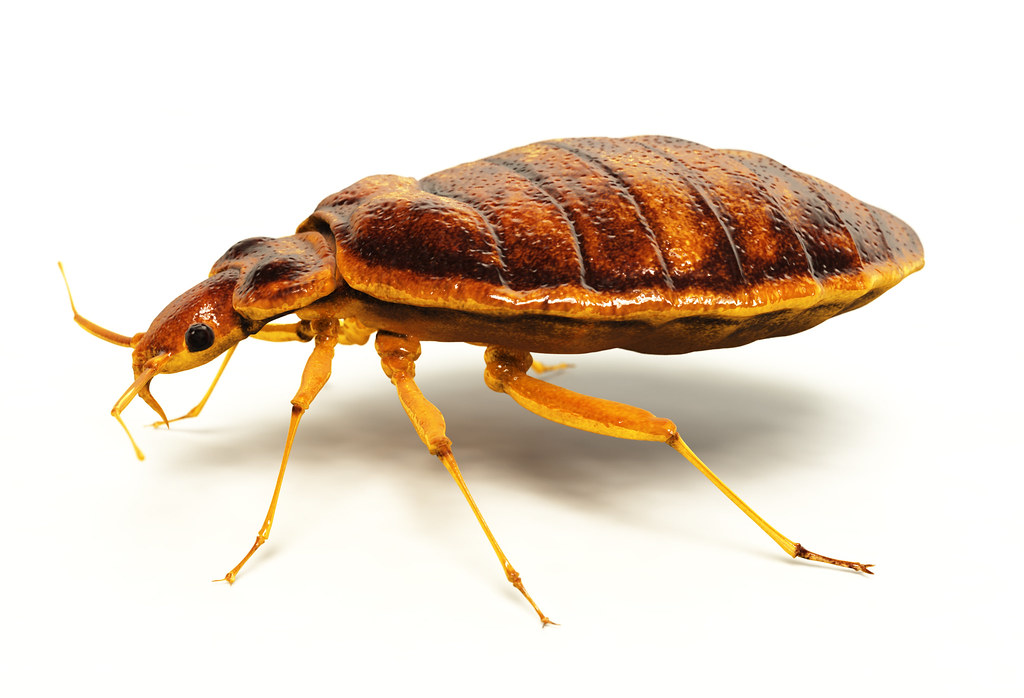Top-Rated Bed Bug Exterminator: DC Exterminator for Effective Treatment
Top-Rated Bed Bug Exterminator: DC Exterminator for Effective Treatment
Blog Article
Discovering the Science Behind Bed Bug Warmth Treatments as a Lasting Parasite Monitoring Method
In the world of parasite monitoring, the pursuit for reliable and sustainable options remains a continuous pursuit. One such approach that has actually obtained grip recently is the usage of heat treatments to deal with bed insect infestations. By taking advantage of the science behind thermal death factors for these relentless insects, heat therapies offer a promising choice to conventional chemical-based techniques. The details of how warm successfully gets rid of bed bugs and the broader implications for lasting bug management methods make this a topic worth checking out additionally.
Bed Bug Warm Treatment Refine

Thermal Death Point for Bed Insects
Revealing bed bugs to elevated temperature levels beyond their thermal tolerance array is vital for achieving effective eradication in heat treatment processes. The thermal death factor for bed pests refers to the temperature level at which these pests can not survive. Research indicates that bed insects begin to perish when subjected to temperature levels above 113 ° F(45 ° C) for a sustained period. As the temperature level raises, so does the death rate of bed bugs. At around 118 ° F(48 ° C ), bed bugs begin to die quickly, with a death rate of almost 99% within mins of direct exposure. This demonstrates the level of sensitivity of bed insects to heats and highlights the efficiency of warmth treatments in eliminating problems. By getting to and keeping temperatures over the thermal fatality point for bed pests, parasite monitoring specialists can make sure extensive removal of bed bug populations, including hard-to-reach locations where chemical treatments may be less reliable. Recognizing the thermal fatality factor for bed pests is crucial for implementing effective warm treatment strategies and accomplishing sustainable pest management results.
Advantages of Heat Treatments
Having actually developed the vital thermal death point for bed insects, it is necessary to now discover the substantial benefits that heat treatments use in properly getting rid of these resistant parasites. When contrasted to standard chemical approaches, heat therapies present a number of essential benefits. Among the primary benefits is that heat can penetrate deep into holes and splits description where bed bugs hide, making certain that also one of the most hard-to-reach areas are heated up to deadly temperatures. This comprehensive method not only kills live pests but likewise targets bed bug eggs, protecting against future infestations.
Additionally, warm treatments are safe and eco-friendly, making them a sustainable bug monitoring method. Unlike chemical pesticides, heat therapies do not leave damaging deposits that can present threats to human health or the atmosphere. This aspect is particularly essential in sensitive atmospheres such as medical facilities, institutions, and domestic areas where chemical usage might not be desirable.
In addition, heat treatments have a high success rate in removing bed insect problems in a solitary therapy, minimizing the demand for several brows through and decreasing interruption to occupants. This effectiveness not find just conserves money and time however additionally offers comfort to those managing bed bug issues.
Efficiency of Heat Treatment

Warm therapies have actually the included advantage of killing bed insect eggs, which are usually immune to traditional chemical treatments. Generally, the performance of warmth therapies in eradicating bed bug invasions makes them a sustainable and dependable insect monitoring approach.
Lasting Insect Administration Perks
Carrying out lasting bug monitoring practices provides long-term benefits for both the atmosphere and public health and wellness. By using techniques such as heat therapies for bug anchor control, we can decrease the reliance on hazardous chemical pesticides that can have adverse results on ecological communities and human health and wellness - exterminator. Lasting bug management strategies aid in protecting biodiversity by targeting specific parasites without hurting non-target organisms, therefore preserving a balanced ecological community
Moreover, sustainable bug management techniques contribute to the total health and wellness and well-being of the public. By minimizing direct exposure to hazardous chemicals used in standard pest control approaches, heat therapies offer a safer option for parasite management in property, commercial, and public areas. This decrease in chemical usage likewise helps in protecting against chemical deposits from polluting water, dirt, and air, safeguarding environmental high quality.
Verdict
In conclusion, bed insect warmth treatments have actually been shown to be a reliable and sustainable bug management technique. The thermal death factor for bed insects makes them at risk to heat treatments, which have various benefits over typical chemical therapies. The effectiveness of heat treatments in removing bed pest invasions while decreasing environmental impact highlights the capacity of this technique as a lasting option for parasite control.
The bed pest warmth therapy process involves raising the temperature within infested areas to a level that efficiently gets rid of bed insects and their eggs. By reaching and keeping temperatures over the thermal fatality factor for bed pests, parasite monitoring specialists can ensure detailed elimination of bed insect populations, including hard-to-reach areas where chemical therapies might be less efficient. One of the primary advantages is that warm can penetrate deep right into fractures and gaps where bed pests conceal, making sure that even the most hard-to-reach areas are warmed to lethal temperature levels. Unlike chemical therapies that may leave behind resistant populaces, warmth treatments offer a ecologically friendly and safe option that can permeate deep into furnishings, walls, and other hard-to-reach areas where bed pests conceal.
The thermal death factor for bed insects makes them susceptible to warmth treatments, which have numerous benefits over standard chemical treatments.
Report this page